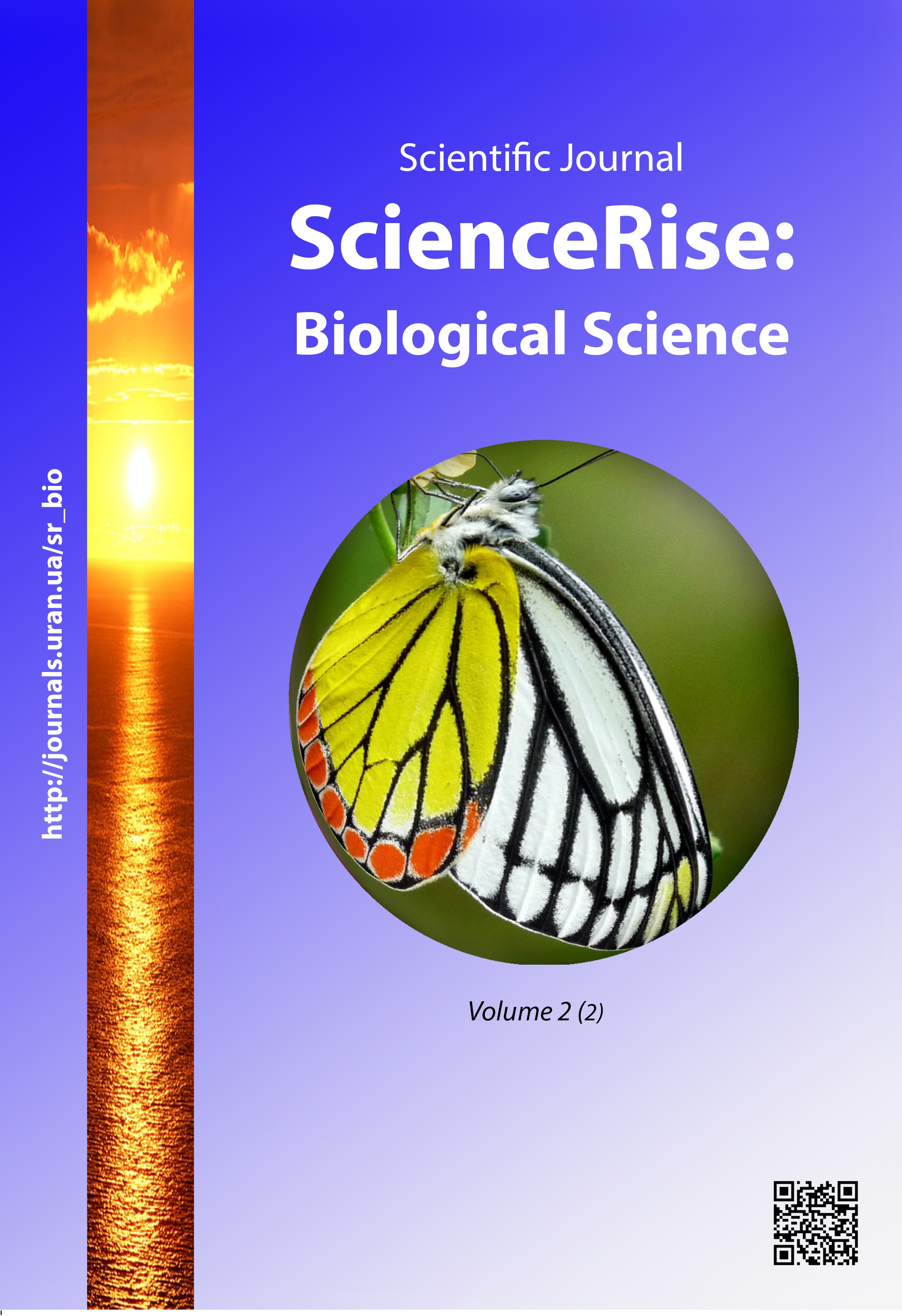The influence of low intensity laser radiation on sensitivity to antibiotics of Pseudomonas aeruginosa
DOI:
https://doi.org/10.15587/2519-8025.2016.77688Keywords:
Pseudomonas aeruginosa, low-intensity laser radiation, sensitivity to antibiotics, photomodification, antibiotic therapy, test strain, resistanceAbstract
The direct impact of low intensity laser radiation with wavelengths of 635 and 870 nm on sensitivity to antibiotics of clinical isolates Pseudomonas aeruginosa and collection test strain Pseudomonas aeruginosa АТСС 27853 is investigated by disco diffusion method. It is established that the use of laser radiation causes a significant increase in sensitivity to antibiotics of investigated strains of microorganisms, there is also defined optimal parameters of radiation for antibacterial therapy photomodification
References
- Kulja, A. F., Sabo, J., Koval, G. M. (2011). Porivnjalnij analiz metodiv antibiotikochutlyvosti umovno-patogennych bakteriy – zbudnykiv oportunistychnych infectsiy ljudyny [Comparative analysis of methods for determining antibiotic sensitivity opportunistic bacteria – pathogens of opportunistic infections rights]. Microbiological journal, 73 (5), 47–53.
- Sorokaumova, L. K., Petrashenko, P. R., Moiseenko, T. M., Volkov, T. O. (2011). Vplyv antiseptychnych preparative na formuvannja resistentnosti v bacteriy [The impact of antiseptic preparations for the formation of resistance in bacteria]. Materials XV Congress of Ukrainian Scientific Society microbiologists, epidemiologists and Parasitologists them. DK Zabolotnoho "Problems and evolution of the epidemic process of leading and parasitic infections modernity". Kharkiv, 79.
- Salmanov, A. G. (2015). Antimіkrobna rezistentnіst ta іnfektsії, asotsіyovanі z medychnoju dopomohoju v Ukrajinі. Epіdemіologіchnіy zvіt multіtsentrovogo doslіdzhennya (2010–2014) [Antimicrobial resistance and infections associated with medical care in Ukraine. Epidemiological Report multicenter study (2010–2014)]. Kyiv: Agrar Media Group, 452.
- Dubrov, S. A., Gavrilenko, A. A., Bugaev, E. I., Lyubitsky, T. A. (2013). Prolonhyrovannaya infuzyya karbapenemov kak al'ternatyvnyj metod antybakteryal'noj terapyy nozokomyal'noj pnevmonyy, vyzvannoy polyrezystentnoy hocpytal'noy floroy [Prolonged infusion of carbapenems as an alternative method of antibiotic therapy of nosocomial pneumonia caused by MDR hospital flora]. Tuberculosis, pulmonary diseases, HIV infection, 3, 21–27.
- Zhdanov, A. S., Krasnozhenov, E. P., Sosnyn, E. A. et. al. (2013). Antybyotykorezystentnost' shtammov Pseudomonas aeruginosa s raznoy sposobnost'yu k syntezu pyotsyanyna [Antibiotic resistance of Pseudomonas aeruginosa strains with different ability to synthesize pyocyanin]. Almanac of Clinical Medicine, 28, 13–17.
- Bergen, P. J., Tsuji, B. T., Bulitta, J. B., Forrest, A., Jacob, J., Sidjabat, H. E. et. al. (2011). Synergistic Killing of Multidrug-Resistant Pseudomonas aeruginosa at Multiple Inocula by Colistin Combined with Doripenem in an In Vitro Pharmacokinetic/Pharmacodynamic Model. Antimicrobial Agents and Chemotherapy, 55 (12), 5685–5695. doi: 10.1128/aac.05298-11
- Svizhak, V. K., Dejneka, S. J. (2014). Antibiotikorezistentnist: bagatogrannist problem [Antibiotic resistance, versatility]. Clinical and Experimental Pathology, XIII/2 (48), 222–224.
- The evolving threat of antimicrobial resistance: options for action (2012). World Health Organisation, 125.
- Antimicrobial resistance (2015). World Health Organization, 194. Available at: http://www.who.int/mediacentre/factsheets/fs194/ru
- Antibiotics given to farm animals could pose super-bug risk, minister admits (2013). The Telegraph. Available at: http://www.telegraph.co.uk/news/health/news/10115082/Antibiotics-given-to-farm-animals-could-pose-super-bug-risk-minister-admits.html
- Popov, V. D. (2011). Sovremennyje aspekty lasernoj terapii [Modern aspects of laser therapy]. Cherkassy: Vertikal’, 608.
- Saied, G. M., Kamel, R. M., Labib, A. M., Said, M. T., Mohamed, A. Z. (2011). The diabetic foot and leg: combined He-Ne and infrared low-intensity lasers improve skin blood perfusion and prevent potential complications. A prospective study on 30 Egyptian patients. Lasers in Medical Science, 26 (5), 627–632. doi: 10.1007/s10103-011-0911-4
- Guliar, S. A., Kosakovskyj, A. L. (2011). BIOPTRON-PILER-light application in medicine. Kyjiv: publishers of A. A. Bogomoletz Institute of Physiology at the National Academy of Scienses of Ukraine and P.L. Shupyk National Medical Academy of Postgraduate Education at the Ministry of Health of Ukraine, 256.
- Afonina, I. A., Kraeva, L. A., Tceneva, G. Y. (2011). Vlianye polyaryzatsyy lazernoho izluchenyya na izmenenye chuvstvytel'nosty k antybyotykam razlychnykh hrupp mikroorhanyzmov [Effect of laser light polarization on the change of sensitivity to antibiotics of different groups of microorganisms]. Application of Lasers in Medicine and Biology. Kharkiv, 159–161.
- Approving the guidelines "Determination of the sensitivity of microorganisms to antibiotics" (2007). The Ministry of Health of Ukraine, 167.
- Babich, Y. M., Kalіnіchenko, S. V. (2016). Metody poshuku perspektyvnykh shtamiv mikroorhanizmiv dlya rozrobky probiotychnykh ta meta biotychnykh preparativ [Methods of finding promising strains for probiotic design and purpose biotic drugs]. Kyiv: Style Izdat, 30.
Downloads
Published
How to Cite
Issue
Section
License
Copyright (c) 2016 Валерій Валерійович Пантьо, Галина Миколаївна Коваль, Валерій Іванович Пантьо

This work is licensed under a Creative Commons Attribution 4.0 International License.
Our journal abides by the Creative Commons CC BY copyright rights and permissions for open access journals.
Authors, who are published in this journal, agree to the following conditions:
1. The authors reserve the right to authorship of the work and pass the first publication right of this work to the journal under the terms of a Creative Commons CC BY, which allows others to freely distribute the published research with the obligatory reference to the authors of the original work and the first publication of the work in this journal.
2. The authors have the right to conclude separate supplement agreements that relate to non-exclusive work distribution in the form in which it has been published by the journal (for example, to upload the work to the online storage of the journal or publish it as part of a monograph), provided that the reference to the first publication of the work in this journal is included.









